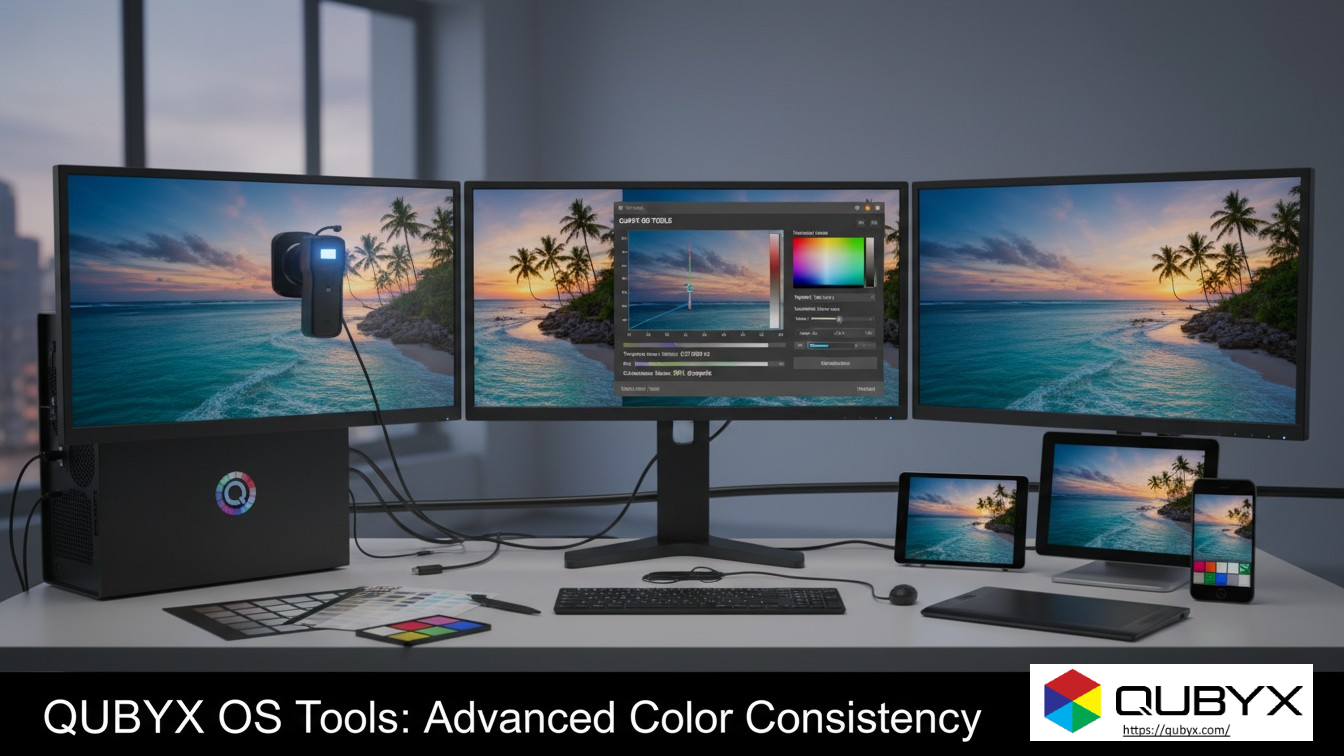News
- Home
- NEMA DICOM Part 14 GSDF Explained with PerfectLum

NEMA DICOM Part 14 GSDF Explained with PerfectLum
- August 26, 2025
- Shamsul
NEMA DICOM Part 14 GSDF Explained with PerfectLum
What is DICOM Part 14 GSDF?
The NEMA DICOM (Digital Imaging and Communications in Medicine) Part 14 Grayscale Standard Display Function (GSDF) is a standard established by the National Electrical Manufacturers Association (NEMA). It was developed to ensure consistent and perceptually linear display of medical images across different monitors and devices.
Unlike consumer displays, which optimize brightness and contrast for aesthetics, medical imaging displays require precision and reproducibility. The GSDF maps digital pixel values to luminance levels in such a way that equal changes in pixel values correspond to equal visible changes in brightness, as perceived by the human eye.
This perceptual linearization ensures that subtle differences in medical images—such as small lesions, microcalcifications, or tissue density variations—are visible to radiologists and clinicians, regardless of the display system used.
Key Characteristics of GSDF
- Perceptual Linearity:
Human vision does not respond to brightness linearly. GSDF compensates for the nonlinear response of the human eye, ensuring consistent contrast perception across the entire grayscale range. - Defined Luminance Range:
GSDF defines how display systems should map input values to luminance, typically within the range of 0.05 cd/m² (black) to 400–600 cd/m² (white) for medical-grade monitors. - Standardization Across Devices:
By following GSDF, images displayed on different calibrated monitors appear identical, supporting accurate cross-comparison of medical images between workstations, clinics, and hospitals. - Compliance Requirement:
The NEMA DICOM Part 14 GSDF is required for diagnostic displays in radiology, mammography, and other clinical imaging fields where accuracy directly impacts diagnosis and patient outcomes.
Role of PerfectLum in GSDF Compliance
PerfectLum is a professional calibration and quality assurance (QA) software designed for medical imaging displays. It enables healthcare organizations to achieve, verify, and maintain GSDF compliance.
Here’s how PerfectLum works with GSDF:
- Calibration:
PerfectLum adjusts the monitor’s lookup table (LUT) so that its luminance response curve matches the GSDF standard precisely. This ensures that images are displayed with perceptual accuracy. - Verification & QA:
The software performs GSDF conformance tests by measuring the display’s luminance response with a photometer. Results are compared against the GSDF curve, confirming compliance. - Quality Assurance Reports:
PerfectLum generates detailed compliance and calibration reports for auditing and regulatory requirements (such as AAPM TG18, DIN 6868-157, and IEC 62563-1 standards). - Automated Scheduling:
Regular calibrations and QA checks can be scheduled, ensuring that displays remain NEMA DICOM Part 14 GSDF-compliant without requiring constant manual intervention. - Remote Fleet Management:
In larger hospital environments, IT administrators can monitor and maintain GSDF compliance across multiple displays remotely using PerfectLum Enterprise.
Why GSDF with PerfectLum Matters
- Diagnostic Accuracy: Subtle grayscale variations critical for early disease detection are preserved.
- Consistency: Uniform image presentation across multiple systems and locations.
- Regulatory Compliance: Meets international medical display requirements.
- Longevity: Maintains consistent image quality throughout the monitor’s lifecycle.
Q&A: NEMA DICOM Part 14 GSDF
Q1- What is NEMA DICOM Part 14 GSDF?
A: The GSDF (Grayscale Standard Display Function) is a standard defined in NEMA DICOM Part 14 that specifies how grayscale values should be displayed on medical imaging monitors. Its purpose is to ensure that medical images (X-rays, CT scans, MRIs, etc.) appear consistently and perceptually uniform across different displays and viewing conditions.
Q2- Why was the GSDF developed?
A: Medical image interpretation depends on subtle differences in grayscale. Without standardization, variations in monitor luminance or gamma correction could distort diagnostic information. The GSDF was developed to:
-
Provide consistent image display across devices.
-
Match the human visual system’s sensitivity to contrast.
-
Ensure diagnostic accuracy and reproducibility.
Q3- How does GSDF relate to human visual perception?
A: GSDF is based on the Barten model of human contrast sensitivity, which describes how the eye perceives luminance differences. Instead of using a simple gamma curve, GSDF aligns display contrast steps with the Just Noticeable Difference (JND) units, so each step in grayscale corresponds to the smallest perceivable brightness change.
Q4- What are JNDs in the GSDF context?
A: A Just Noticeable Difference (JND) is the smallest change in luminance that the human eye can reliably detect under standard viewing conditions. GSDF defines a curve where each grayscale step corresponds to equal perceptual differences in JNDs, ensuring uniform visibility of details.
Q5- How is GSDF different from standard gamma correction?
A:
-
Gamma correction applies a simple power function (e.g., gamma = 2.2), optimized for consumer displays, not medical viewing.
-
GSDF instead maps luminance values according to JNDs, achieving perceptual uniformity, which is crucial for detecting subtle lesions or abnormalities in medical imaging.
Q6- How is NEMA DICOM Part 14 GSDF implemented in practice?
A:
-
Monitors are calibrated using specialized software and light sensors (photometers).
-
Calibration adjusts luminance response to match the GSDF curve.
-
Quality assurance (QA) software like PerfectLum continuously monitors and corrects deviations to maintain compliance with GSDF standards.
Q7- What happens if a display does not comply with GSDF?
A:
-
Contrast steps may not be uniform.
-
Fine image details could be lost or exaggerated.
-
Diagnostic errors may occur due to missed pathologies.
-
Inconsistent imaging interpretation between different systems or radiologists can result.
Q8- Is GSDF mandatory?
A: While not legally mandatory worldwide, GSDF compliance is often required by hospital policies, radiology departments, and accreditation standards (such as ACR, AAPM, and IHE profiles). Many regulatory frameworks in Europe, the US, and Asia strongly recommend or mandate its use for diagnostic monitors.
Q9- What is the role of QA in GSDF compliance?
A: Regular quality assurance is critical because displays can drift over time due to aging or environmental factors. QA involves:
-
Routine luminance calibration checks.
-
Validation against GSDF.
-
Automatic correction (via QA software).
This ensures that diagnostic accuracy is preserved long-term.
Q10- How does NEMA DICOM Part 14 GSDF benefit radiologists and patients?
A:
-
Radiologists: Consistent, high-quality images reduce fatigue and increase confidence in diagnoses.
-
Patients: More accurate imaging interpretations lead to better clinical outcomes and reduced risk of misdiagnosis.
In Summary:
The NEMA DICOM Part 14 GSDF is the backbone of standardized medical image display, ensuring perceptual accuracy and consistency. PerfectLum provides the tools to implement, monitor, and maintain GSDF compliance, making it indispensable for healthcare institutions that rely on high-quality medical imaging for diagnosis.
Related Posts
- December 1, 2025
- News
How QUBYX OS Tools Deliver Next-Level Color Consistency The Hidden
- November 30, 2025
- News
Open-Source Tools for Medical Display QA: Why QUBYX Leads the
- November 29, 2025
- News
How QUBYX Open Source Tools Revolutionize 3D LUT Generation




